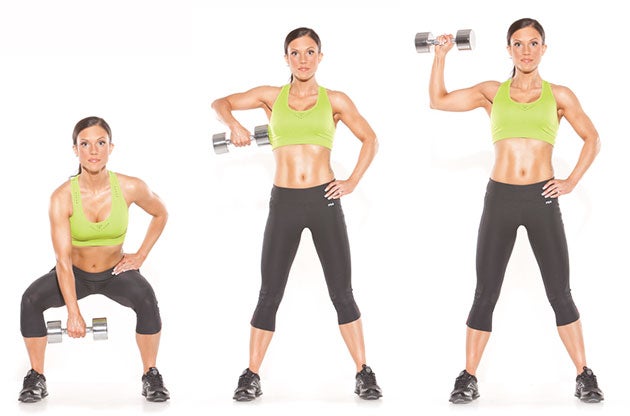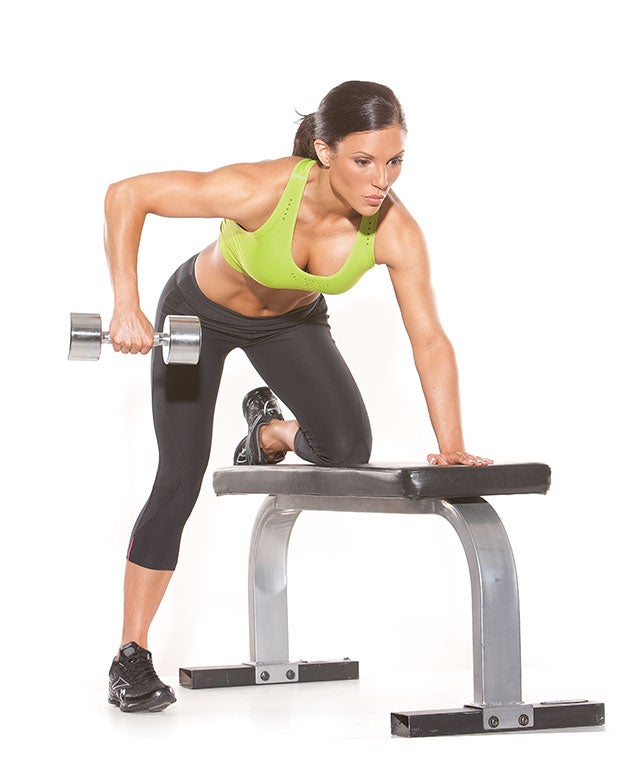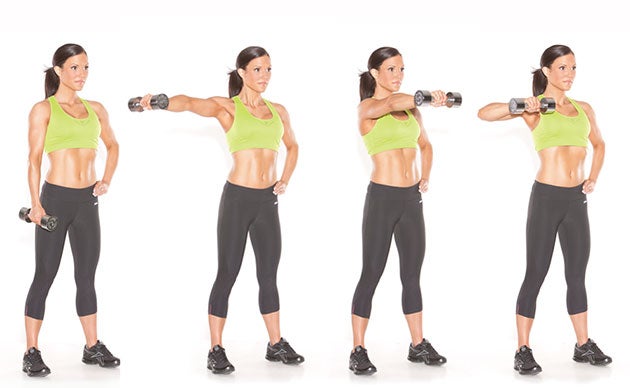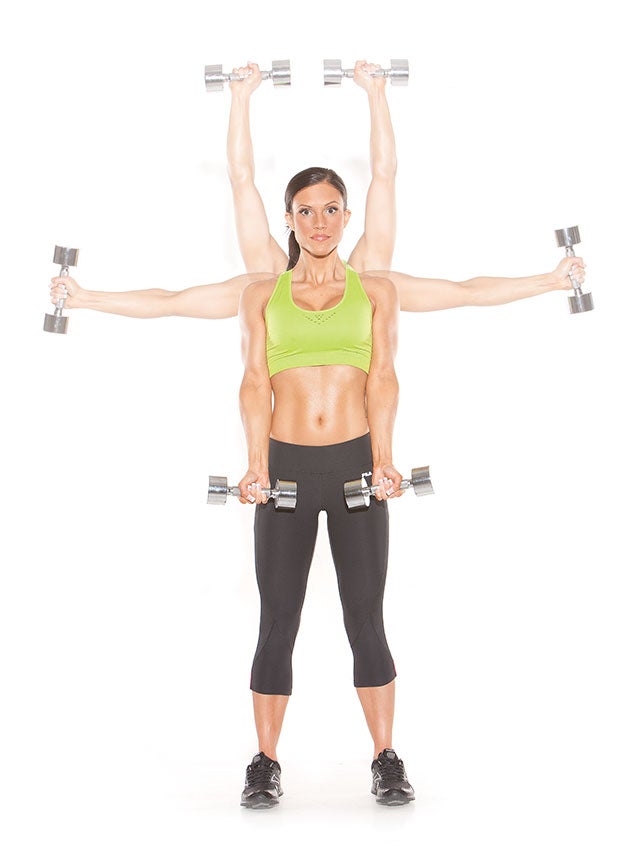Heading out the door? Read this article on the new Outside+ app available now on iOS devices for members! Download the app.
Believe it or not, you have a lot in common with the Greek deity Atlas: just like this mythical character, it sometimes feels as though you have the world on your shoulders. From the mental woes that cause you to hunch them forward with worry, to the demanding physical tasks that you put them through, your shoulders go to bat for you every day — which is why you need to emphasize them in your training program.
Since regular presses and flyes can become redundant, we’ve come up with this stay-excited solution: four effective exercises that you may not know, but which will soon become your faves.
The Nitty-Gritty
First, a little anatomy lesson: the shoulder is a ball-and-socket joint that’s made up of numerous muscles, ligaments and tendons. The largest muscles are called the deltoids (also known as the “delts”), which consist of three heads: anterior, lateral and posterior. Although each has its own functions, in the broadest terms, they work together to move your arms.
While it might be tempting to skip training one or more of these delts heads, all three are equally important. Why? One word: aesthetics. “If you want to create sculpted shoulders, training all three delts muscles is crucial,” says Todd Durkin, MA, CSCS, owner of Fitness Quest 10 in San Diego, California. Since you can see your shoulders from the front, back and sides, each area should be defined for the biggest wow-factor.
Well-Balanced
But appearance isn’t the only reason. “Not giving equal attention to the three heads of the delts can lead to imbalance, dysfunction and eventually pain,” explains Durkin. By training all three delts heads, you’ll help prevent aches, add beautiful muscle to your body, and improve the functionality of your shoulders.
Sizzle Your Shoulders
Complete this workout two to three times per week on non-consecutive days, doing two to three sets of 12 to 20 reps for each exercise. As these exercises are complex, start with lighter weights (see “Shoulder Safety”).

Dumbbell Pull-and-Press
Target Muscles: anterior and lateral deltoids
Set up: Stand with your feet wider than shoulder-width apart, holding a dumbbell in one hand, with your palm facing the front of your thigh.
Action: Bend your knees to squat. As you rise, pull the dumbbell upward. Rotate your arm to point your hand upward, then extend your arm overhead. Slowly reverse the move, then repeat. When done, switch arms.
Training Tips: Keep your breathing steady. Keep your knees behind your toes. Don’t lean toward your non-working side.

One-Arm Rear-Delt Row
Target Muscles: posterior deltoids
Set up: Stand beside an exercise bench and place one knee and one hand on top of its surface. Hold a dumbbell in your other hand, with your arm extended toward the floor and palm facing behind you.
Action: Bend your arm to row the weight upward, until your upper arm is parallel to the floor; your palm should still be facing behind you, and your arm should be bent at a 90-degree angle as shown. Slowly return to the start. When your set is through, repeat on your opposite side.
Training Tip: Prevent neck strain by looking at the floor in front of the bench.

Lateral Raise-to-Front Pull
Target Muscles: anterior and lateral deltoids
Set up: Stand tall and hold a dumbbell in one hand. Your palm should face the side of your thigh as shown.
Action: Keeping your arm straight, slowly raise the dumbbell out to your side. From this position, move your arm fluidly in front of you. Next, bend your elbow to draw the weight back toward your shoulder. Reverse the move to complete one rep. Finish your set, then repeat on your opposite side.

Overhead Dumbbell Arc
Target Muscles: anterior and lateral deltoids
Set up: Hold a light dumbbell in each hand and stand with your feet hip-width apart or wider. Extend your arms toward the ground, with your palms facing forward.
Action: Raise both weights out and up in an arcing motion, keeping your arms straight, until the weights are above your head. Reverse to return to the start. Repeat for the rest of your set.
Training Tip: This exercise requires extremely light weights. Try it without to get the hang of the movement.
Shoulder Safety
Because the shoulder joints are so delicate, they can be easy to injure, which is why Durkin issues some caveats when training the shoulders.
For starters, use lighter weights when you first begin training. “Because the shoulder joint consists of so many small muscles, using light weight and high reps will help prevent injury,” says Durkin, adding that you might want to veer towards 15 to 20 reps per set when you’re first building shoulder strength.
Only after you’ve developed a base foundation of strength in the shoulders and, more importantly, if you don’t have any pain, should you consider increasing the intensity by using heavier weights and lowering your number of reps per set.